Posted on February 3rd, 2015 by Cleo Smits
Re-Cap of J-term + update on work done + what’s to come
Now that the Spring semester has officially begun it is a good time to get back into logging the work I have been doing as part of the process of curating this exhibition. J-term sped by without me getting to work much on my capstone unfortunately. I was taking my last core class, What is a Religion, taught by Anthony Appiah, and I underestimated the intensive nature of J-term classes; the amount of reading and writing and the hours of class took up all my productive hours.
I did, however have a deadline of January 26th to send my mentors a first draft of my exhibition catalog essay. As soon as my J-term class was over, I have an intensive few days to get this done, and then was able to meet with Salwa on the 28th to go over main structural edits. We also looked over the latest version of my checklist.
I also had a capstone seminar class on the 27th, when we talked about how we will be writing our 10-page reflection essays. The more we talked about them and I thought about it the following days, I realized that instead of only writing my catalog essay (at first this was going to replace the mandatory 10-page capstone reflection paper) it would make sense to also write a separate reflection essay. This way, my catalog essay can present my academic argument in the exhibition by going through the art historical background and setting it up as a framework through which I analyze the three contemporary examples of institutional critique (Serkan Ozkaya, Babak Golkar, and the Gulf Labor). A reflection essay will be a space for me to explain and analyze my process throughout this project- and to reflect on the reception of the exhibition (the reflection essay is due April 30th). It will also be a way for me to show the curatorial research I did as a part of this capstone, and my confusion/questions about where I lie (or want to lie) within the different theories of curatorial theory and practice.
I also met with Deb and Ruben since the beginning of the semester. I spoke to Deb about my idea to design a timeline (which will be at the beginning of the exhibition). Instead of simply providing a table with books/ readings on historical institutional critique- a proposal I had made last semester- a timeline will allow me to pick and choose the historical examples that best relate to the exhibition and presents the viewer with the framework I want them to be able to view the exhibition through. I have basically already created this framework in the beginning of my catalog essay so I have the material to work with and will now need to be very specific and streamline. Deb suggested that I reach out to Craig Proezl to ask him about this web application that would help design such a timeline. I would print in on the large banner paper from the library for the exhibition. (Having the web format will act as an appendix to my research and materials for the show, which I will not be able to easily present in documentation).
My meeting with Ruben brought up a number of questions I need to explore with my mentors. We were meeting about the Gulf Labor group and whether or not including their project 52 Weeks would be too contentious (Ruben ultimately decides if a capstone is to be public or private in scope). Ultimately, I was able to talk about the work, why I want to include it, etc. Ruben and I talked about different curatorial voices (which belong to different theories of curation)- one which attempts to present the work neutrally (or at least appear to do so). This is in contrast to the approach of taking a clear stance and expressing, openly sharing one’s opinion. There is a way in which when work is presented neutrally, the curator is automatically implied to be supporting/promoting it.
In terms of the Gulf Labor, from the beginning I have been clear that I don’t 100% agree with their tactics and/or tone in some of their works (even within 52 Weeks). So how, still trying to present this exhibition with a neutral tone, focusing on the art historical argument, can I not have the audience assuming that I am including their work because I am supporting it? It would seem that the only way to avoid this assumption is to be overt with the audience about my opinion in regards to their work. Yet when I last met with Salwa, we spoke about the importance of neutrality in leaving room for discussion and interpretation- how a curator voicing their opinion can silence dialogue or other views. So, is there a way for me to show my stance and provide some critiques in a way that actually prompts further dialogue? Ultimately, Ruben said that my mentors will need to give a recommendation about the public/private status of the exhibition.
I also just had another capstone seminar class today in which we began drafting our introductions for our reflection papers. I found this actually incredibly hard- I don’t know how to start, and I realized through discussions with the GAF, Lauren Seaman, that there are many different topics/themes from my project that I could reflect on in this paper. I realized that I think I have been focusing too much on the Gulf Labor and how to include them because I have been imagining potential controversy, which has been slowing me down. In reality, the connection to NYUAD is only through their writings about their work, on their website- the work itself does not directly, but rather indirectly critiques NYUAD and the instance of poor labor practices during the construction of this campus. So I need to be clear about how (and if) simply including the Gulf Labor in the exhibition with 52 Weeks is a critical action towards the university. More importantly, this question has been my focus the past few days, and I feel that I need to put is aside while I return to the main point- an art historical framework for understanding contemporary institutional critique (is this the main point?).
I also met with Maya about my budget, which I had to submit for approval. This meeting brought up the following questions/things to determine:
- Serkan Ozkaya- how exactly am I exhibiting the pages? Mounted? –> get quote from EXP and Silver Rocks
- Wall text- vinyl lettering or mounted on foamcore? Labels to be mounted–> check again for quotes
- Gulf Labor- plan is to print the posters and pin them directly to the wall–> print in the library with thicker paper
- Babak Golkar- spoke with Laura Latman (registrar) about the process of loaning works from The Third Line- fine arts shipping (which company?)-do I need to get a security guard? 24/7 surveillance (I will be able to take some of the hours as well as friends helping out those 2 weeks- install + exhibition)- do the sculptures need extra protection? pedestal + vitrine
I asked Laura Metzler (representing Babak at The Third Line) the following questions:
What are the insurance values?
Are the c-prints already framed or glazed/glass-covered? (Would I need to frame anything?)
Are these works all limited edition/edition of 1?
Can you provide me with details for installation (any specifications, etc.)?
Laura Latman was suggesting that the safest way to exhibit Deranged would be on a pedestal covered by a vitrine. Do you have any objections to this?
Also with safety of the work in mind, is Ambidextrous Apparatuses secured to the table element (the sculpture made of the removed sections of Batopeng)?
What to do
- revised draft of catalog essay
- checklist for Ruben- with all images + links (to videos, other mediums, etc)
- confirm details with TTL and Serkan
- outline (Prezi) for reflection paper
| Posted in Curatorial Process
No Comments;
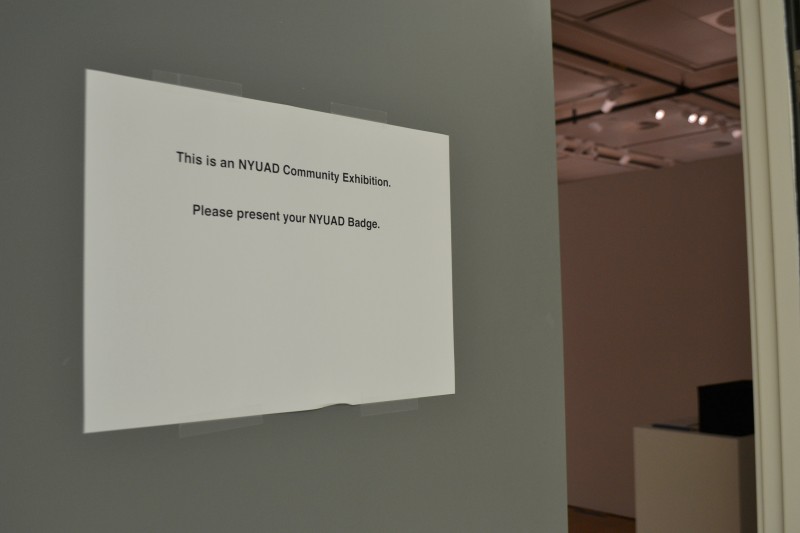
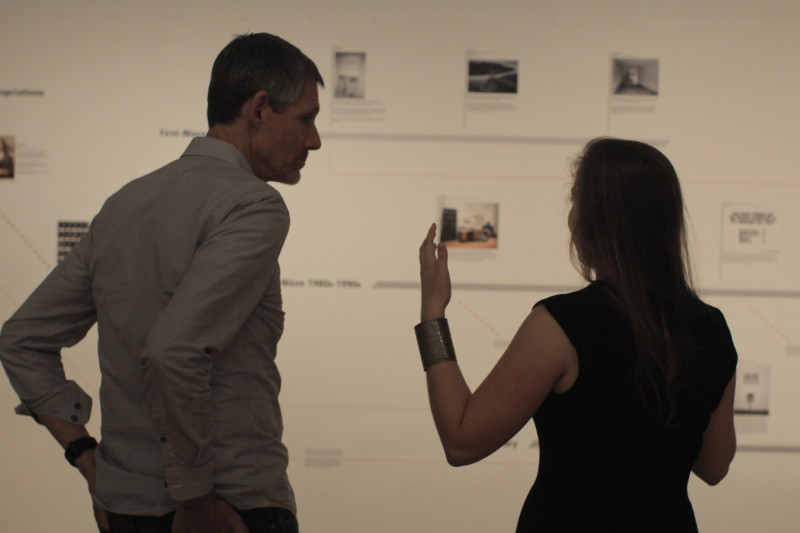
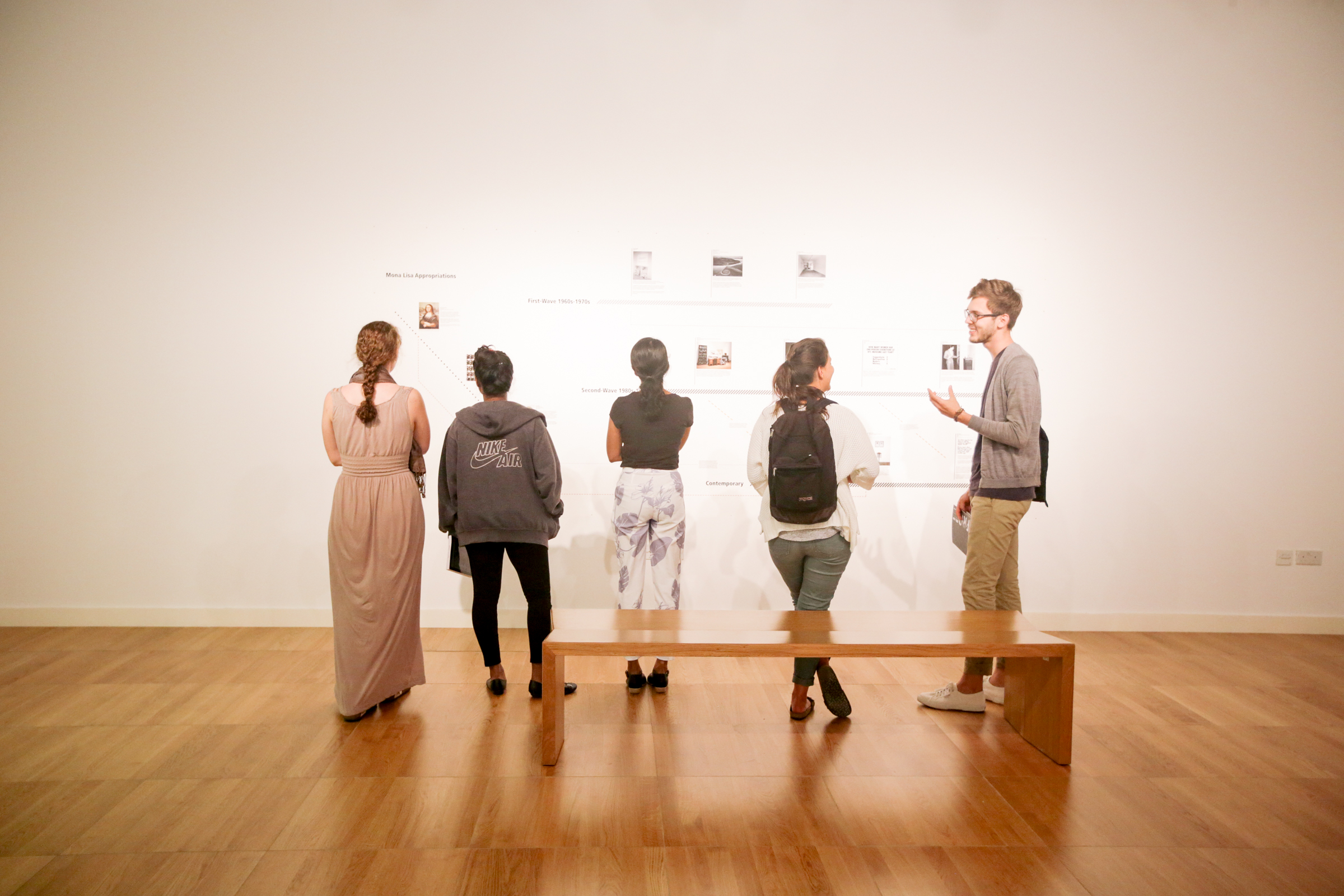
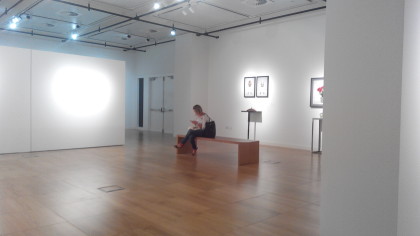
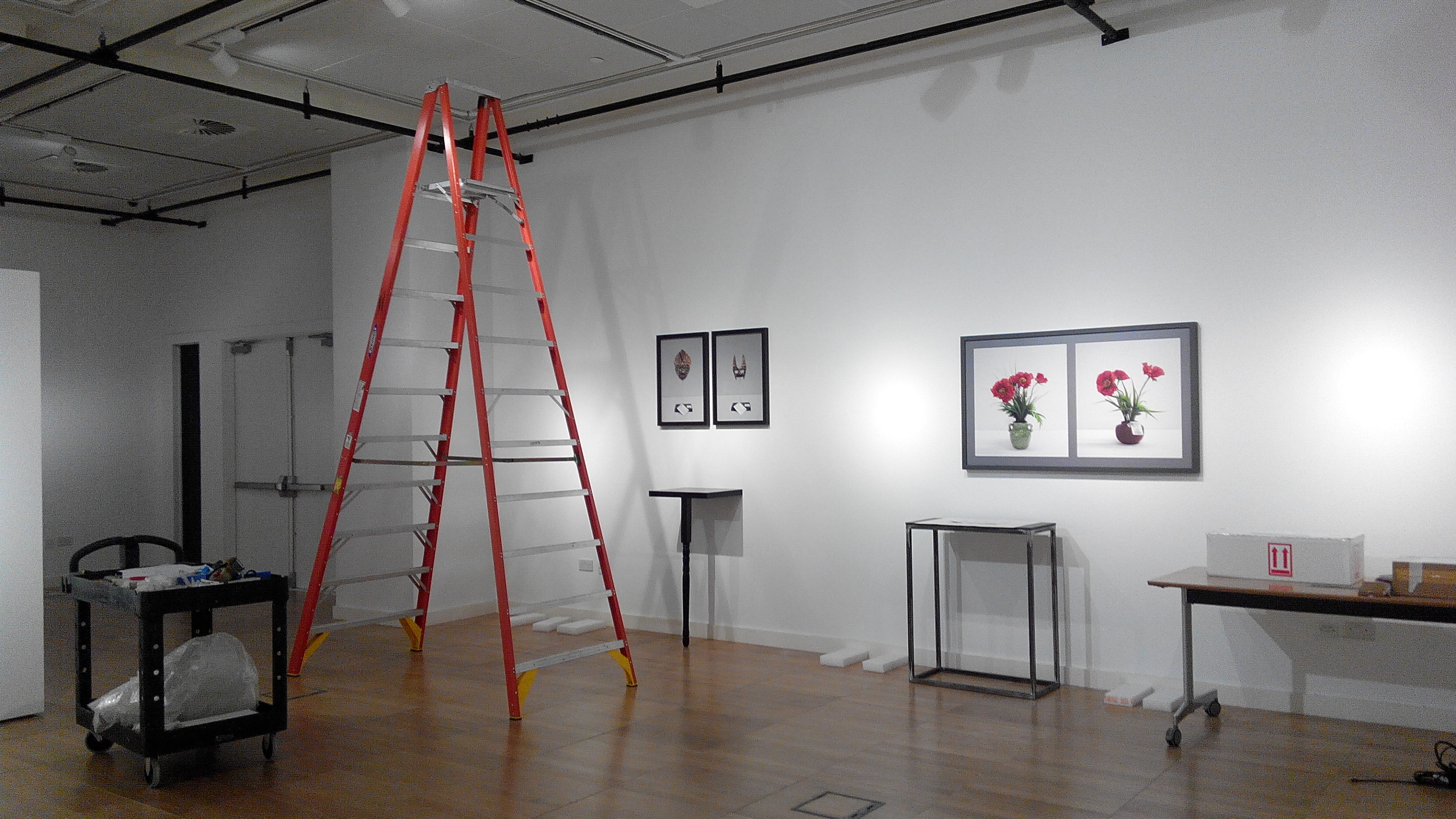
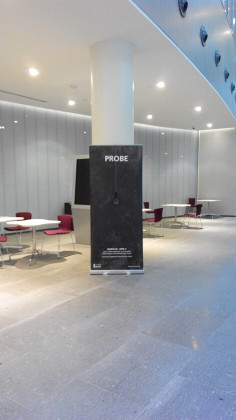
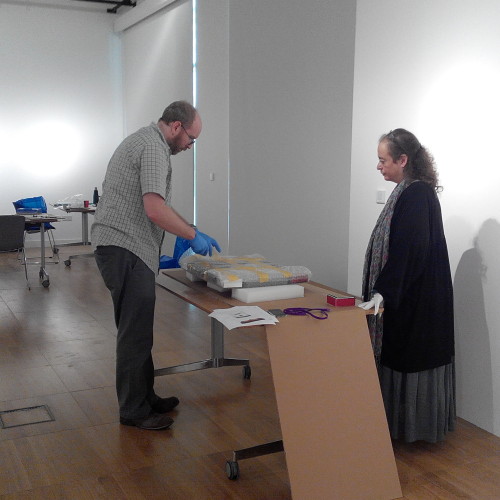

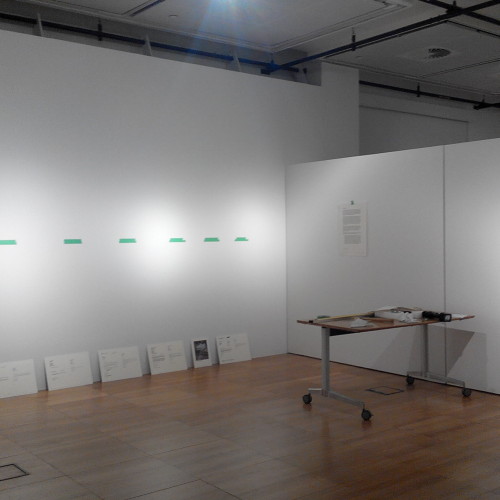
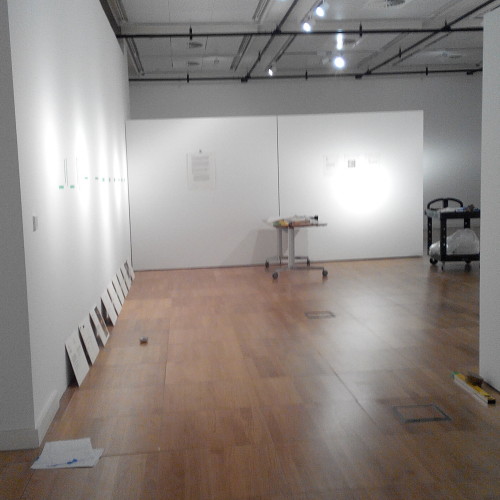
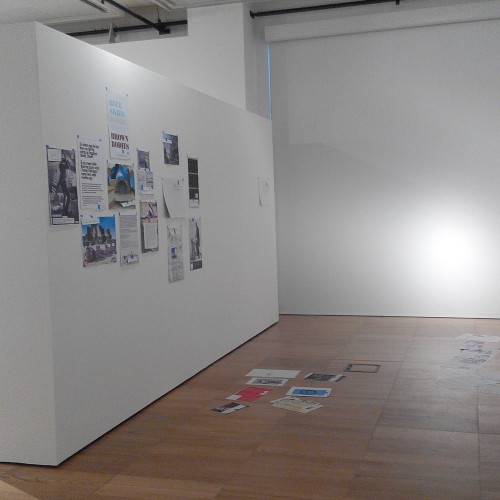
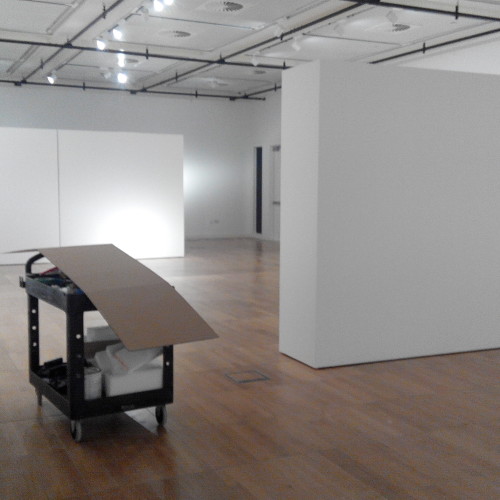
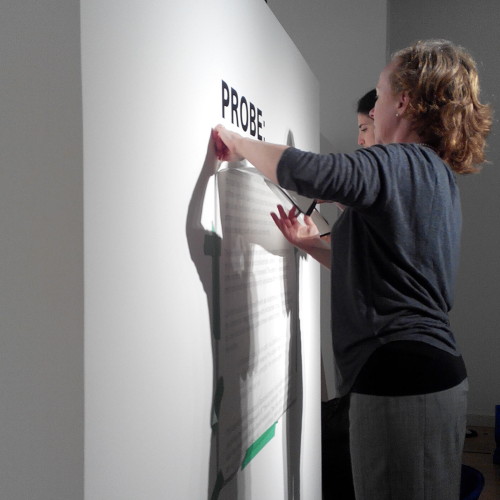
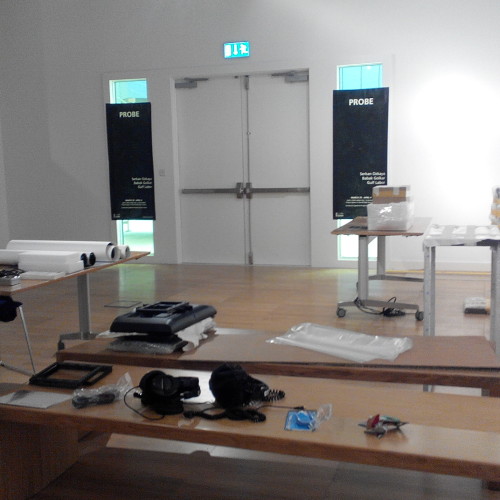
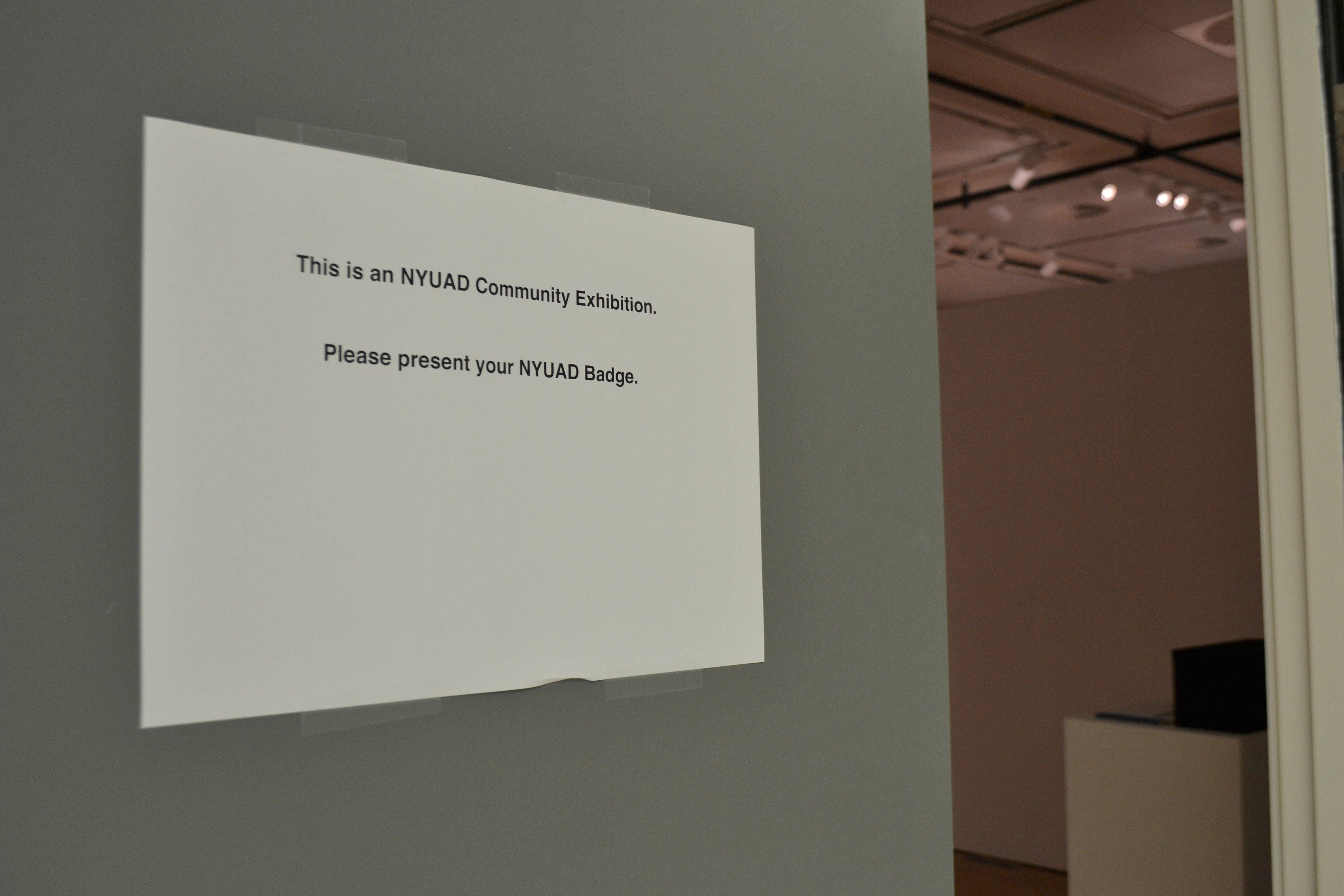
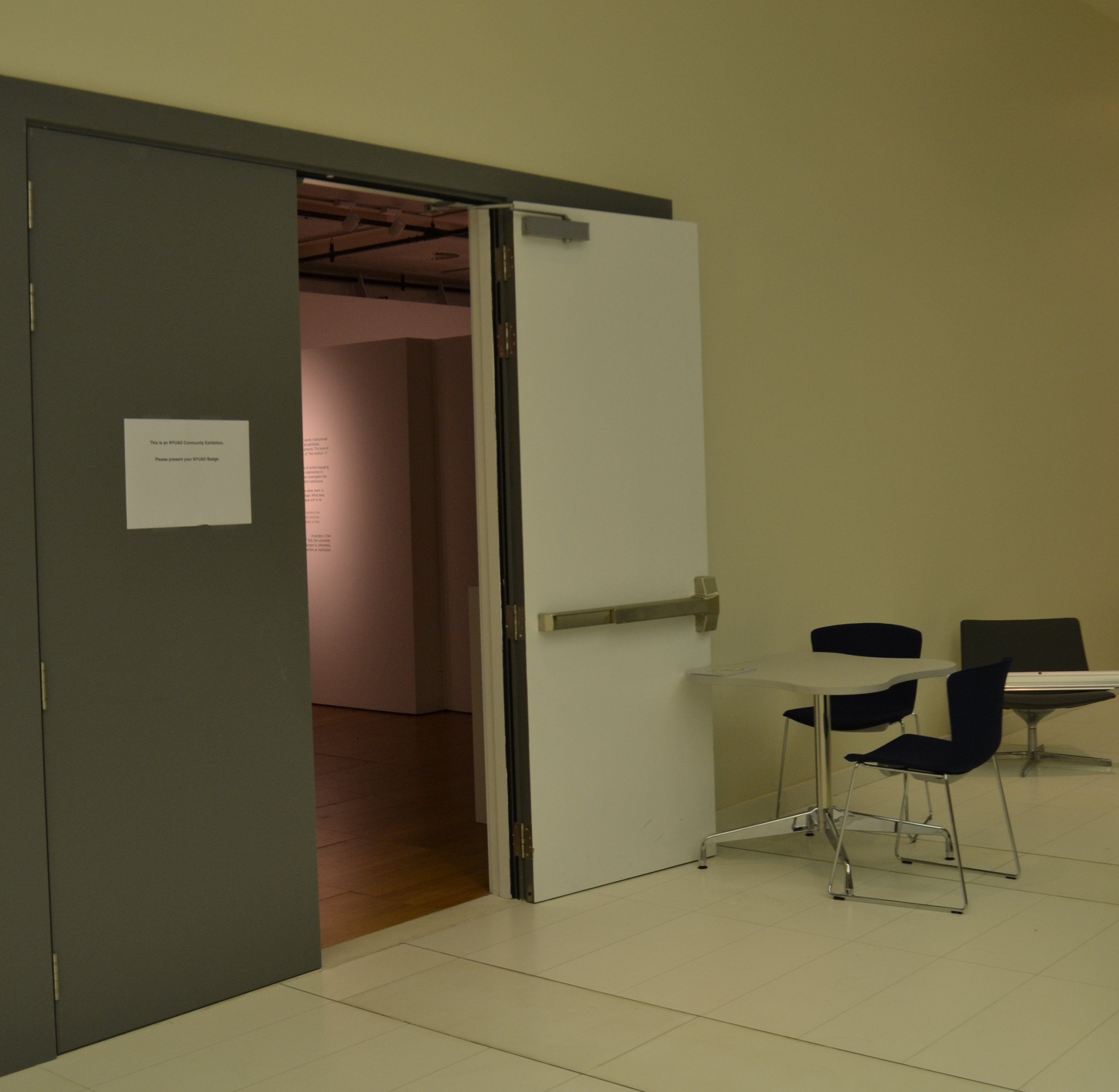
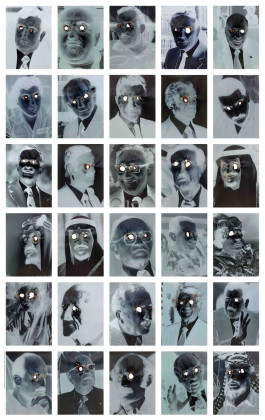
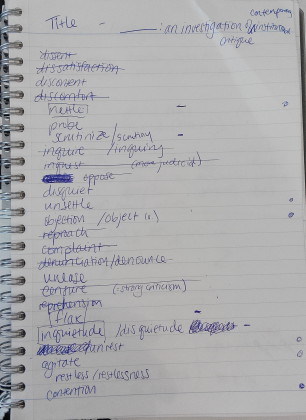 Title- choosing a title has been really hard and took a long time with a lot of very helpful input from anyone I could ask, really. In the end, I decided to stick to: PROBE: an investigation of contemporary institutional critique (even though I changed my mind and was hesitating for a while between that and Object (n./v.) ). ‘Probe’ has the connotation of scrutinizing (‘a thorough investigation into a matter’), and even the first definition listed (‘a blunt-ended surgical instrument used for exploring a wound or part of the body’) relates to the idea of this art as a tool (a tool to explore, to expose/make us aware, to apply pressure, etc.). I prefer the idea of ‘probing’ as investigating the term ‘institutional critique’, different practices, and as even having the possibility to respond to, to probe, the work in the exhibition.
Title- choosing a title has been really hard and took a long time with a lot of very helpful input from anyone I could ask, really. In the end, I decided to stick to: PROBE: an investigation of contemporary institutional critique (even though I changed my mind and was hesitating for a while between that and Object (n./v.) ). ‘Probe’ has the connotation of scrutinizing (‘a thorough investigation into a matter’), and even the first definition listed (‘a blunt-ended surgical instrument used for exploring a wound or part of the body’) relates to the idea of this art as a tool (a tool to explore, to expose/make us aware, to apply pressure, etc.). I prefer the idea of ‘probing’ as investigating the term ‘institutional critique’, different practices, and as even having the possibility to respond to, to probe, the work in the exhibition.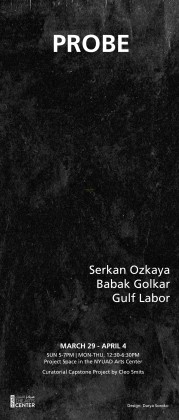 Design meeting(s) with Dasha- Darya Soroko is doing all the visual design for the exhibition, which is so great- she is very creative, makes beautiful designs, and is really helpful to keep the process moving. We began by planning the timeline/genealogical chart for the exhibition and discussed the brochure, the catalog essay, and the book that will be made after the exhibition as documentation. We then had to focus on the banner/flyer/invite design, as these would be the first to be printed and I wanted to get them up before the start of Spring Break so that people see the information. Then, once we had a design for these, the same visual ‘identity’ will be applied to the other components. Just yesterday morning, we printed out 3 final banners at the library, and I had 2 printed as roll-up banners at Emirates Express (which I picked up today). The design goes off of the scientific imagery of the word ‘probe’. There is an interactive element- a hanging physical magnifying loop that the viewer has to hold up to the middle of the banner to read the subtitle ‘an investigation of contemporary institutional critique’.
Design meeting(s) with Dasha- Darya Soroko is doing all the visual design for the exhibition, which is so great- she is very creative, makes beautiful designs, and is really helpful to keep the process moving. We began by planning the timeline/genealogical chart for the exhibition and discussed the brochure, the catalog essay, and the book that will be made after the exhibition as documentation. We then had to focus on the banner/flyer/invite design, as these would be the first to be printed and I wanted to get them up before the start of Spring Break so that people see the information. Then, once we had a design for these, the same visual ‘identity’ will be applied to the other components. Just yesterday morning, we printed out 3 final banners at the library, and I had 2 printed as roll-up banners at Emirates Express (which I picked up today). The design goes off of the scientific imagery of the word ‘probe’. There is an interactive element- a hanging physical magnifying loop that the viewer has to hold up to the middle of the banner to read the subtitle ‘an investigation of contemporary institutional critique’.